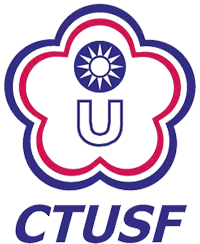Sports & Exercise Research Volume 21 Number 3
Author:Chia-Hua Kuo
Period/Date/Page:Vol. 21 No. 3 (2019 / 09 / 30) , Pi - iv
DOI:10.5297/ser.201909_21(3).0000
Research in Sports: Regarding "Half of What We Know is Wrong"
Abstract:The purpose of research is to answer important questions and to satisfy our curiosity. Unbiased scientific data with logical explanation helps knowledge expansion for humans, particular for those beneficial in optimizing life quality. Ignorance is the major barrier of human survival. Thus, knowledge expansion allows us to understand the world for better survival chance. Therefore, value of research is mainly judged by whether novel, important questions are correctly answered. It seems like we have learned tons of knowledge in the past. We are still ignorant as most of important questions regarding survival have not been correctly answered. Dr. Burwell delivers speech in a Harvard Medical School graduation during the late 1940s, "half of what we have taught you is wrong. Unfortunately, we don't know which half." Dr. Kornberg, the Nobel laureate in Physiology and Medicine in 1959, also strengthens the point as "half of what we know is wrong: the purpose of science is to determine which half." The two keywords of science are evidence and logics. Both scholars highlight the uncertainty of human knowledge and implicates that constant challenges against existing knowledge is the way to consolidate knowledge. Inherent uncertainty of human knowledge leads us to reconsider several key questions: how would you design test to evaluate students if answers of the question may be uncertain in the future? How do you judge academic excellence to select students? How faculty members should prepare and encourage scientific challenge against class content? Similarly, in the area of sports science, there were many answers of important questions are proven wrong at the beginning. For example, what is the optimal weekly frequency of high intensity exercise to increase aerobic power? It was conventionally believed that fitness improvement should be proportional to training frequency. Fox designed a study to challenge this idea by allocating subjects into groups with frequency of 2 days and 4 days per week of sprinting training for 13 weeks. The result show that 2 days per week produced the superior improvement than 4 days per week (Fox et al., 1975). Furthermore, high frequency weight training will do more harm than good in survival (Liu et al., 2019). Both outcomes suggest the importance of recovery time for high intensity training. Another example is the question on what exercise intensity is the best for fat loss outcome? Conventional concept is low-to-moderate intensity of exercise, not higher intensity. This is largely because of greater energy reliance on carbohydrate with less fatty acid oxidation as exercise intensity increases. However, fat loss outcome, measured by Dual-energy X-ray absorptiometry (DEXA) and magnetic resonance imaging (MRI), is neglectable at low-to-moderate intensity of exercise training compared with higher intensity (Vissers et al., 2013). The major flaw of the old concept is based on an intuitive thought that the only way to lose fat is fatty acid oxidation. Aforementioned examples let us realize that we should maintain certain level of skeptics on conventional wisdom, which is instrumental to advance the current knowledge further. It is common to witness discrepancy between study hypothesis and outcomes, as well as lack of meaningful difference on those we thought it supposes to be different. Journal should welcome and encourage those studies that challenges conventional wisdom based on evidence. (Full text)




